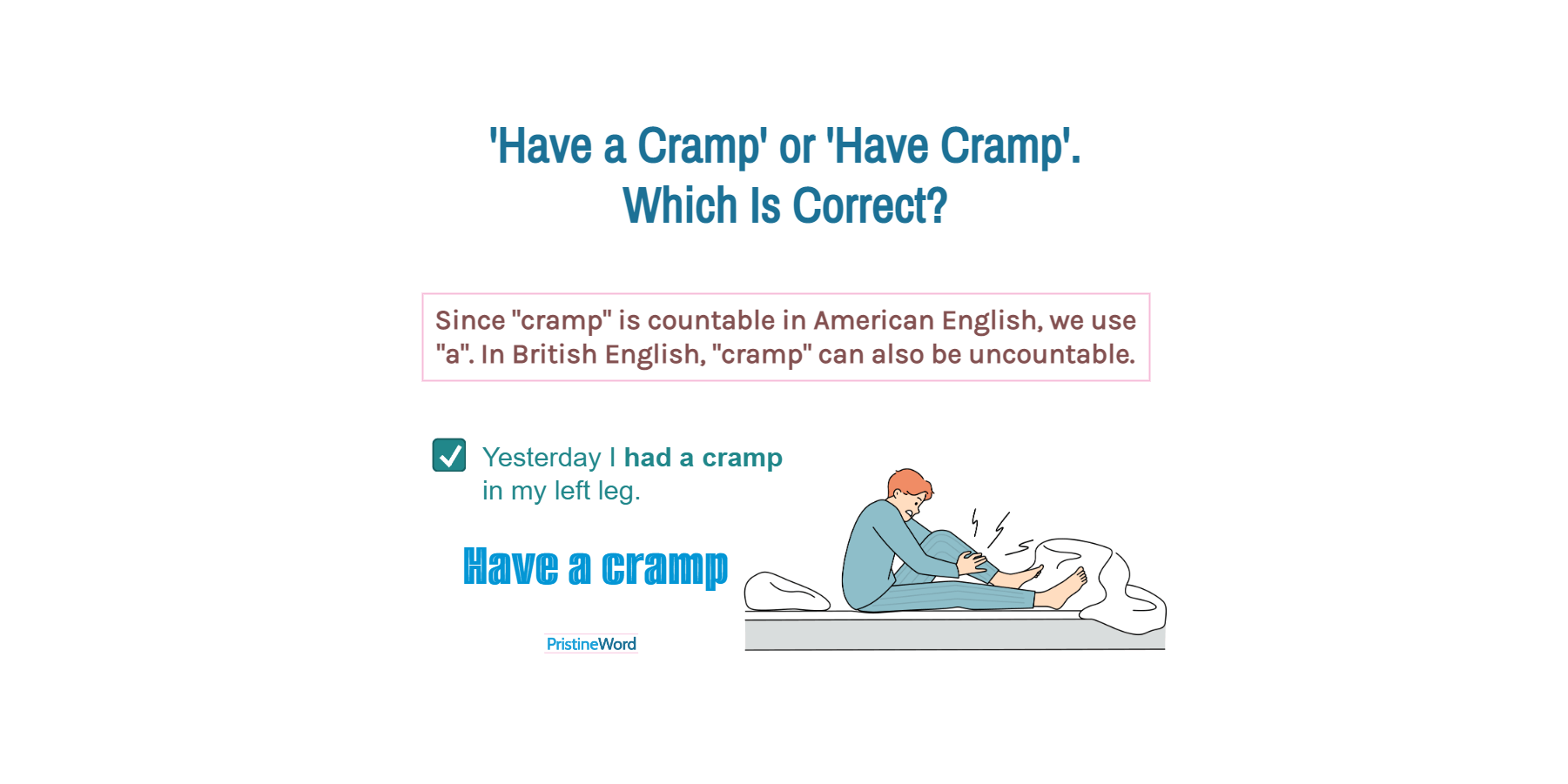Since the word cramp is countable in American English, we say "have a cramp" (not "have cramp").
Since the word cramp is countable in American English, we say "have a cramp" (not "have cramp").
Yesterday I had a cramp in my right arm.
Barbara had a cramp and had to stop dancing.
In British English, "cramp" can also be uncountable, so the article "a" can be omitted.
He’s got cramp in his leg. (British English)
Karen got cramp and had to drop out of the race. (British English)
Follow the same convention with the verbs cause, experience, prevent, get, treat, etc.
Typically, you can treat a cramp on your own.
Use a possessive pronoun (my, your, his, etc.) to identify the person experiencing a cramp.
This massage can help relieve your cramp
Use a determiner (any, some, these, that, a number of, a range of, etc.) to quantify or identify a specific group of cramps.
Heavy lifting can cause a number of cramps.
But omit the determiner when speaking about cramps, or a particular group of cramps, in a general sense.
Leg cramps are often experienced after exercise.
Muscle cramps tend to be more common in the hotter months.
Most symptom names require the indefinite article (a/an). More examples can be found below:
- Allergy
- Backache (The article can be omitted in British English.)
- Cold
- Cough
- Earache (The article can be omitted in British English.)
- Fever (The article can be omitted in British English.)
- Headache
- Heart attack
- Runny nose
- Sore throat
- Stomachache (The article can be omitted in British English.)
- Stroke
- Toothache (The article can be omitted in British English.)

